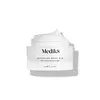What's inside
What's inside
 Key Ingredients
Key Ingredients

 Benefits
Benefits

 Concerns
Concerns

 Ingredients Side-by-side
Ingredients Side-by-side

Water
Skin ConditioningGlycerin
HumectantGlyceryl Acrylate/Acrylic Acid Copolymer
Humectant1,2-Hexanediol
Skin ConditioningSorbitol
HumectantButylene Glycol
HumectantCaffeine
Skin ConditioningCamellia Sinensis Leaf Extract
AntimicrobialPalmitoyl Tripeptide-38
Skin ConditioningHydroxyacetophenone
AntioxidantAsparagopsis Armata Extract
Skin ProtectingHydroxypropyl Cyclodextrin
MaskingAscophyllum Nodosum Extract
Skin ConditioningChrysanthellum Indicum Extract
Skin ConditioningMica
Cosmetic ColorantPhenoxyethanol
PreservativeCI 77891
Cosmetic ColorantWater, Glycerin, Glyceryl Acrylate/Acrylic Acid Copolymer, 1,2-Hexanediol, Sorbitol, Butylene Glycol, Caffeine, Camellia Sinensis Leaf Extract, Palmitoyl Tripeptide-38, Hydroxyacetophenone, Asparagopsis Armata Extract, Hydroxypropyl Cyclodextrin, Ascophyllum Nodosum Extract, Chrysanthellum Indicum Extract, Mica, Phenoxyethanol, CI 77891
Water
Skin ConditioningCaprylic/Capric Triglyceride
MaskingDimethicone
EmollientStearic Acid
CleansingGlycerin
HumectantCetearyl Alcohol
EmollientNylon-12
Cetearyl Olivate
Propylene Glycol
HumectantC12-16 Alcohols
EmollientSorbitan Olivate
EmulsifyingSodium Acrylate/Sodium Acryloyldimethyl Taurate Copolymer
Emulsion StabilisingPalmitic Acid
EmollientCaffeine
Skin ConditioningCandelilla/Jojoba/Rice Bran Polyglyceryl-3 Esters
EmulsifyingCera Microcristallina
Emulsion StabilisingGlyceryl Stearate
EmollientPhenoxyethanol
PreservativeHydrogenated Lecithin
EmulsifyingNiacinamide
SmoothingSqualane
EmollientSodium Stearoyl Lactylate
EmulsifyingBenzyl Alcohol
PerfumingAmelanchier Alnifolia Fruit Extract
Skin ConditioningSodium Hyaluronate
HumectantArginine
MaskingButylene Glycol
HumectantEthylhexylglycerin
Skin ConditioningTocopherol
AntioxidantGlucosyl Hesperidin
HumectantSorbitol
HumectantHylocereus Undatus Fruit Extract
Skin ConditioningFerric Hexapeptide-35
Skin ConditioningPalmitoyl Tripeptide-1
Skin ConditioningPalmitoyl Tetrapeptide-7
Skin ConditioningDehydroacetic Acid
PreservativeTremella Fuciformis Extract
HumectantCarbomer
Emulsion StabilisingPogostemon Cablin Leaf Oil
MaskingAscorbic Acid
AntioxidantPolysorbate 20
EmulsifyingWater, Caprylic/Capric Triglyceride, Dimethicone, Stearic Acid, Glycerin, Cetearyl Alcohol, Nylon-12, Cetearyl Olivate, Propylene Glycol, C12-16 Alcohols, Sorbitan Olivate, Sodium Acrylate/Sodium Acryloyldimethyl Taurate Copolymer, Palmitic Acid, Caffeine, Candelilla/Jojoba/Rice Bran Polyglyceryl-3 Esters, Cera Microcristallina, Glyceryl Stearate, Phenoxyethanol, Hydrogenated Lecithin, Niacinamide, Squalane, Sodium Stearoyl Lactylate, Benzyl Alcohol, Amelanchier Alnifolia Fruit Extract, Sodium Hyaluronate, Arginine, Butylene Glycol, Ethylhexylglycerin, Tocopherol, Glucosyl Hesperidin, Sorbitol, Hylocereus Undatus Fruit Extract, Ferric Hexapeptide-35, Palmitoyl Tripeptide-1, Palmitoyl Tetrapeptide-7, Dehydroacetic Acid, Tremella Fuciformis Extract, Carbomer, Pogostemon Cablin Leaf Oil, Ascorbic Acid, Polysorbate 20
 Reviews
Reviews

Ingredients Explained
These ingredients are found in both products.
Ingredients higher up in an ingredient list are typically present in a larger amount.
Butylene Glycol (or BG) is used within cosmetic products for a few different reasons:
Overall, Butylene Glycol is a safe and well-rounded ingredient that works well with other ingredients.
Though this ingredient works well with most skin types, some people with sensitive skin may experience a reaction such as allergic rashes, closed comedones, or itchiness.
Learn more about Butylene GlycolCaffeine is most associated with coffee, tea, and cacao. In skincare, it helps with calming inflammation and is rich in antioxidants.
While caffeine is used to treat cellulite and and dark circles, further studies are needed to prove this. It has been believed to help with these skin conditions due to its ability to dilate blood vessels and increase blood flow.
Some studies are looking into caffeine's ability to protect against UV rays.
Learn more about CaffeineGlycerin is already naturally found in your skin. It helps moisturize and protect your skin.
A study from 2016 found glycerin to be more effective as a humectant than AHAs and hyaluronic acid.
As a humectant, it helps the skin stay hydrated by pulling moisture to your skin. The low molecular weight of glycerin allows it to pull moisture into the deeper layers of your skin.
Hydrated skin improves your skin barrier; Your skin barrier helps protect against irritants and bacteria.
Glycerin has also been found to have antimicrobial and antiviral properties. Due to these properties, glycerin is often used in wound and burn treatments.
In cosmetics, glycerin is usually derived from plants such as soybean or palm. However, it can also be sourced from animals, such as tallow or animal fat.
This ingredient is organic, colorless, odorless, and non-toxic.
Glycerin is the name for this ingredient in American English. British English uses Glycerol/Glycerine.
Learn more about GlycerinPhenoxyethanol is a preservative that has germicide, antimicrobial, and aromatic properties. Studies show that phenoxyethanol can prevent microbial growth. By itself, it has a scent that is similar to that of a rose.
It's often used in formulations along with Caprylyl Glycol to preserve the shelf life of products.
Sorbitol is a sugar alcohol. It is a hydrating and moisturizing agent created from the reduction process of glucose.
Most sorbitol is usually made from potato starch. It is also found in fruits such as apples and pears.
As a humectant, Sorbitol helps draw water to the skin. This helps keep the skin hydrated. Sorbitol also helps create a thicker texture in products. You might find sorbitol in your toothpaste and other gels.
It is a non-irritating ingredient that is great for those with dry skin.
Sorbitol is a prebiotic. It helps promote the growth of healthy bacteria on your skin. The bacteria on your skin form a microbiome. This microbiome helps protect your skin from infection and harmful bacteria.
Learn more about SorbitolWater. It's the most common cosmetic ingredient of all. You'll usually see it at the top of ingredient lists, meaning that it makes up the largest part of the product.
So why is it so popular? Water most often acts as a solvent - this means that it helps dissolve other ingredients into the formulation.
You'll also recognize water as that liquid we all need to stay alive. If you see this, drink a glass of water. Stay hydrated!
Learn more about Water